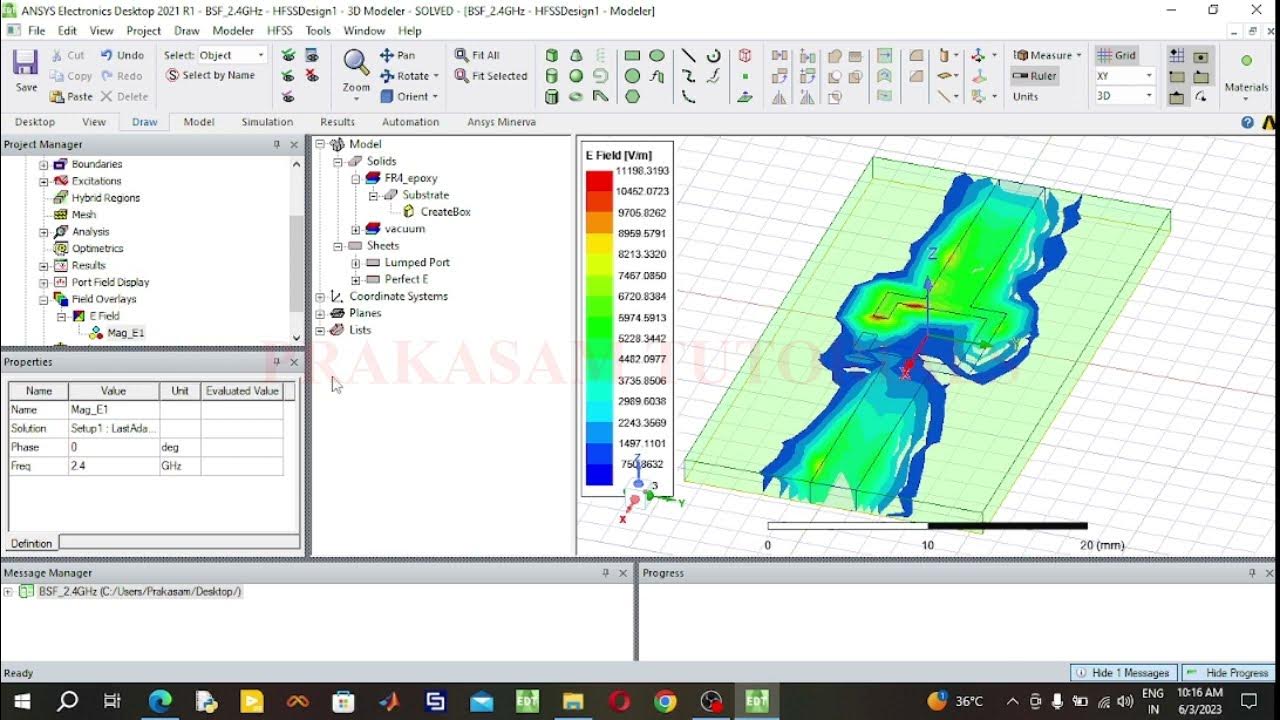#1381 Microstrip RF Bandpass Filter
Summary
TLDRIn this video, the presenter discovers an inexpensive bandpass filter on Alibaba, designed for ADS-B with a resonant frequency around 1 GHz. Using a tracking generator, they measure the filter's performance, revealing a 3dB bandwidth of 240 MHz centered at 1.085 GHz. The video also discusses the importance of dielectric properties and the significance of 45-degree corner cuts for impedance matching. It encourages viewers to experiment with building their own filters using copper or aluminum tape on bare PC boards.
Takeaways
- 🛒 The speaker purchased a cheap PC board filter from Alibaba, likely for its utility in radio frequency applications.
- 📡 It is a micro strip design with a ground plane and two SMA connectors, indicating it's intended for radio frequency signal filtering.
- 🔍 The filter is of the bandpass variety, allowing certain frequencies to pass while blocking others, with elements designed for resonance and capacitive coupling.
- 🎯 It is marked as an ADS-B filter, suggesting it's possibly used in aviation to receive Automatic Dependent Surveillance-Broadcast signals.
- 🧐 The speaker guesses the frequency range might be around a gigahertz, but this is not confirmed and is based on the physical appearance of the filter.
- 🔬 A tracking generator is used to measure the filter's performance, with a through connector to create a baseline for measurement.
- 📊 The filter's response is normalized to a flat 0 dB line for accurate analysis, showing a designed frequency and harmonics.
- 📈 The filter has a center frequency of approximately 1.085 GHz with a 3 dB bandwidth of 240 MHz, and a designed frequency range from 964 MHz to 1.2 GHz.
- 🛠️ The filter can serve as a training tool for understanding RF filtering, and similar filters can be自制 using bare PC boards and conductive tape.
- ⚙️ Designing such filters requires considering the dielectric properties and thickness of the PC board, which most CAD programs can account for.
- 🔍 The corners of the filter are cut at 45-degree angles, which is important for signal propagation and impedance matching, preventing signal reflection and ensuring smooth transmission.
Q & A
What type of filter is being discussed in the script?
-The script discusses a PC board filter, which is a micro strip design with a ground plane on the bottom and two SMA connectors.
What is the purpose of the filter mentioned in the script?
-The filter is a bandpass filter, designed to allow a specific resonant frequency to couple in while blocking other frequencies.
What is ADS-B mentioned in the script?
-ADS-B stands for Automatic Dependent Surveillance–Broadcast. It is a technology in which an aircraft determines its position via satellite navigation and then broadcasts it, enabling it to be tracked. The script mentions an ADS-B filter, which is likely designed to filter signals in the frequency range used by ADS-B systems.
What method is used to measure the filter's performance in the script?
-The script describes using a tracking generator to measure the filter's performance by connecting the input and output together and normalizing the response to a flat zero dB line.
What is the approximate center frequency of the filter as guessed in the script?
-The script suggests an initial guess that the center frequency of the filter is around a gigahertz.
What is the actual center frequency of the filter as measured in the script?
-The actual center frequency of the filter, as measured, is approximately 1.085 gigahertz.
What is the bandwidth of the filter at the 3 dB point as mentioned in the script?
-The bandwidth of the filter at the 3 dB point is 240 megahertz.
What are the low and high frequency limits of the filter as described in the script?
-The low frequency limit is 964 megahertz, and the high frequency limit is 1.2 gigahertz.
How can one create their own bandpass filter as suggested in the script?
-The script suggests that one can create their own bandpass filter by getting bare PC boards and using copper tape or aluminum tape to construct the design.
Why are the corners of the filter cut at a 45-degree angle as explained in the script?
-The 45-degree angle cuts on the corners of the filter are important because they help in impedance matching and signal propagation by reducing signal reflection and ensuring the signal continues to the next section of the filter.
What is the significance of the dielectric properties and board thickness in filter design as mentioned in the script?
-The dielectric properties of the PC board and the thickness to the ground plane are significant in filter design because they affect the electrical characteristics and performance of the filter. Most CAD programs can account for these factors during the design process.
Outlines

This section is available to paid users only. Please upgrade to access this part.
Upgrade NowMindmap

This section is available to paid users only. Please upgrade to access this part.
Upgrade NowKeywords

This section is available to paid users only. Please upgrade to access this part.
Upgrade NowHighlights

This section is available to paid users only. Please upgrade to access this part.
Upgrade NowTranscripts

This section is available to paid users only. Please upgrade to access this part.
Upgrade Now5.0 / 5 (0 votes)





